#the nerdery
Explore tagged Tumblr posts
Text
I love self-referential statements where you just say the name of the thing you wish to express and it counts as having expressed the thing so named. Apologies. Greetings. Fair warning. We should be able to do that with more things, I think.
6K notes
·
View notes
Text

i thought that was a normal, even expected amount of trekkie behavior actually
#past tense weekend only happens once!!!#this text is from the friend who wants us to go to work in costume as michael and tilly#and wants me to do a podcast with her of star trek guided meditations!!#but turns out!!!!! there are always more levels of star trek nerdery to unlock#deep space nine
506 notes
·
View notes
Text
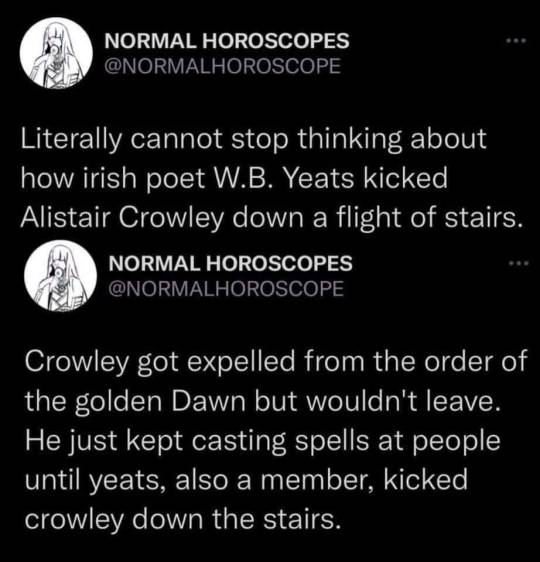
The Battle of Blythe Road (ultimate nerd slap fight of the year).

#w.b. yeats#william butler yeats#aleister crowley#hermetic order of the golden dawn#nerd fight#golden dawn#occultism#nerdery#magic
643 notes
·
View notes
Text
What Rank did Michikatsu [Human Kokushibō] Hold as a Samurai?
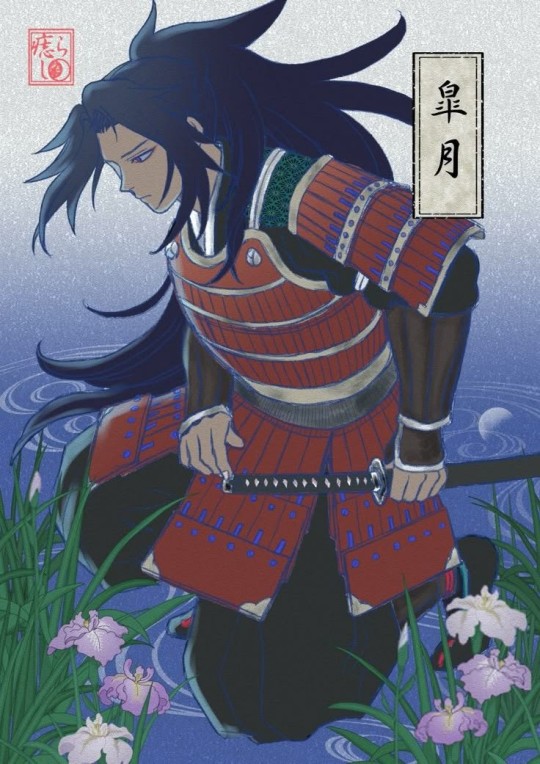
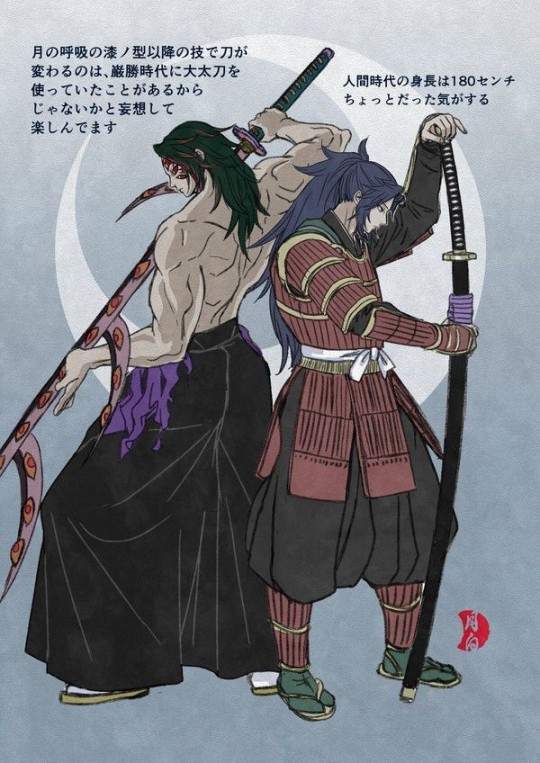
When we think of a samurai, we often envision a fierce warrior prepared for battle. While this is partly true, we often tend to forget the internal heirarchy among them. Like any military group, samurai had a clear chain of command for smooth operations. However, it's important to note that samurai were a social class rather than a military one.
These "ranks," or more so, distinctions within the samurai were closely tied to hereditary social status, the extent of land ownership, and titles within the clan, rather than personal skills, which could vary depending on the era.
In this discussion, we will concentrate on the Sengoku era, as it is relevant to our topic. I will examine Michikatsu's role based on the available canonical information.
⚠ SPOILERS AHEAD ⚠ | Masterlist

⨳ Where His Father stood

In the image above, Michikatsu talks about his father having a "vassal." A lot could be inferred from this, but it is likely that his father either might be a samurai lord [Sengoku daimyo] or a wealthy, high-ranking samurai who supports smaller samurai.
[Daimyo (大名): military lords who controlled small, unified areas in which all the land either belonged to themselves or was held in fief by their vassals] [Vassals: subordinates who pledged their loyalty and obligations towards powerful lords]
So essentially, he was not just an ordinary samurai but rather a figure of considerable importance. His possession of vassals and land suggests that he must be exercising some form of governance, implying that he is possibly some sort of lord having an independent clan.
As you can see, he seemed to have personal servants:

And also personal messengers:
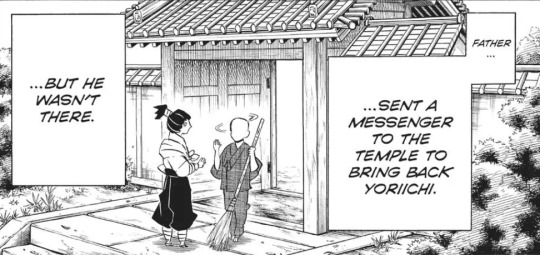
Though it is rather difficult to tell whether he was a powerful lord or not—an actual daimyo who was the direct vassal of the shogun, or just a lesser lord having a smaller land—possibly a heir to the family head or a landowner with a fief.

⨳ Was The Tsugikuni Clan Powerful?
First, let us understand what was going on during that time:
"This was the 'Age of Warring States', when scores of minor daimyo seized power for themselves in their immediate localities and fought each other until, during the mid-16th century, a comparative handful of 'super-daimyo' competed with each other on a grand scale before Japan was finally reunified" [source]
From this, it seems logical to assume that the Tsugikuni clan was a smaller one rather than a grand one—also considering Michikatsu's father's rather obsessive nature and his intense determination on getting better heirs, even to the point of being willing to harm his own family due to superstitious beliefs. Better heirs: more likely the clan gets to thrive and gain power.
Also, if we consider these words from Kokushibou:
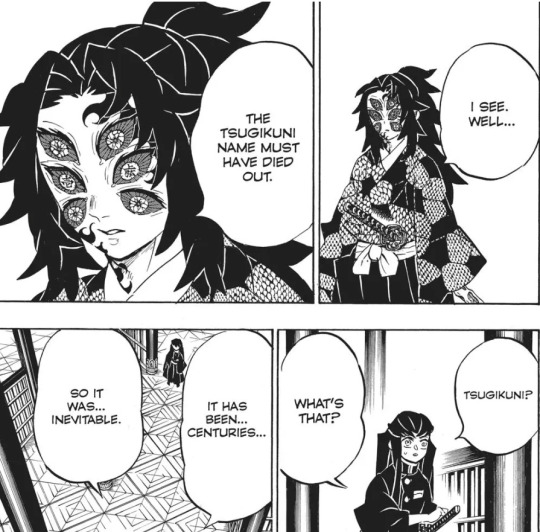
Notice how he says this—he doesn't seem to be very surprised to know that his clan's name has died out, which would only solidify the fact that his clan must not be very powerful to begin with. [Considering that many direct descendants of the major clans today still seem to be thriving, with many carrying out their clan names. Muichiro seems to be an exception here]
So now that we know that his clan was likely not a powerful one, we could also assume that his father was a local lord rather than a full on daimyo for obvious reasons. Not only that, but this would also suggest that their clan must be a retainer family—they would be under a much stronger lord—a powerful daimyo, whom they would had to serve.

⨳ MICHIKATSU'S POSIBBLE RANK [DISTINCTION]
Before moving on, I would just like to point out that holding a high-ranking position as a samurai—such as leading troops— was a result of personal achievement rather than mere familial ties. If a family did not meet the necessary standards of talent and capability, their members would be assigned to lesser roles based on who they served.
With that being said, let us now try fitting in Michikatsu into all of this and find out what military rank he should have based on his family background:
Initailly, I was rather confused and wondered if Michikatsu could be a Hatamoto. They were the highest ranking samurai, considered the most loyal and skilled, who acted as bodyguards towards their lord. Sounds familiar, right? However, there was one piece of canon information that completely debunked this idea:

Samurai usually had to chop off their enemy’s head as proof of their kills; typically that shouldn't be done by the hatamoto, as they typically stayed close to their lords as a last resort instead of fighting on the front lines like the others.
Okay.. so he probably isn't a hatamoto. If his first instinct was to bring the head of Ubuyashiki to Muzan, then it suggests he must have done this before. if that's the case, then he must have ranked lower than a hatamoto, more so in a class where he might have been around collecting heads. After looking into what the manga could offer, I reached two conclusions:
1. He was a Taisho (大将)[general]: These ranked officials were the generals in the Daimyo's army, leading groups of soldiers called kumi. Depending on the troops they commanded, they were either referred to as Samurai-taisho or Ashigaru-taisho. They usually oversaw multiple kumi, each consisting of around 50 to 100 men.
2. He was a Kumigashira (組頭) [captain/platoon commander]: These officers controlled and led a single kumi of troops and were called samurai-kumigashira or ashigaru-kumigashira based on the type of troops in their kumi; which, often consisted upto 15-30 men each.
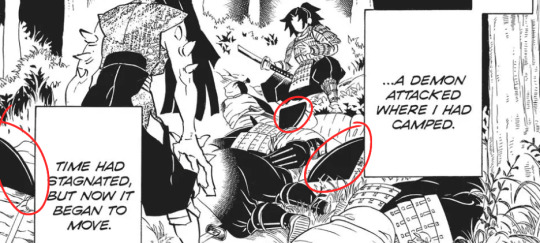
-> By those conical hats (jingasa) those men are wearing, I'm pretty sure they are depicted as Ashigaru foot soldiers. [This explains why he refers to them as his subordinates, as ashigaru were considered lower than samurai.]
Looking at the image, I doubt there are 50-100 men present there, and it seems more likely there are about 15-30. Therefore, we can conclude that he must be an Ashigaru-kumigashira.
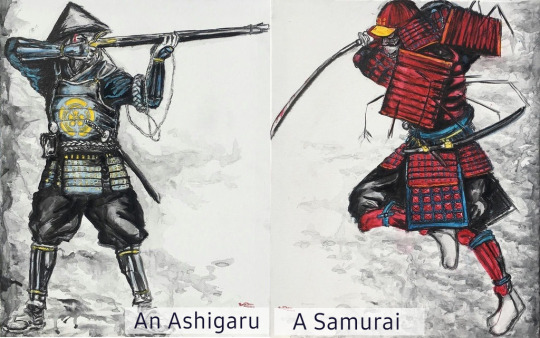
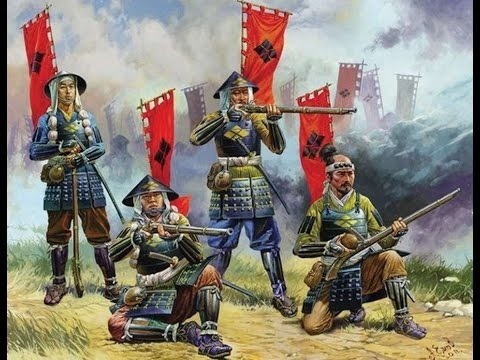
Also, when people talk about Ashigaru, they usually think of peasants taken out of their farms. This is a misconception. Even though they were lower in class, ashigaru were generally treated as full on warriors. Not only were they as capable as their samurai counterparts, some were even stronger than them.The men under Michikatsu's command were fully capable and skilled swordsmen.

⨳ Michikatsu's Troops and His Role:
A general overview of the make up of the sengoku era army
—In short, the troops were reorganised in Sonae, which had between 300 to 800 men. Each Sonae included various types of troops. They were split into smaller units called Kumi, based on their weapons. These included archers, gun squads, cavalry, spear squads, and standard bearers.

By looking at these images, I see no one holding weapons, just a few casual swords thrown in here and there, which I find to be very odd..
Perhaps Michikatsu had set up his base further from his soldiers and gathered them up for a speech about the next day's plans just before they went to sleep? This could explain why they were caught off guard by the demon and didn’t have their weapons ready. After all, it’s strange not to have your weapons out when you are being attacked.
Regardless of the situation, his troops should be either a spear unit [Yari-gumi (長柄組)] or an archer unit [Yumi-gumi (弓組)].
These troops Consisted of: 1 samurai commander/katana samurai, 2-4 servants, ~20-30 foot soldiers, 3 labourers, 1 cavalry horse, and 2 packhorses.
Why you ask? This is because, firstly; guns weren't introduced until the mid sengoku period in 1543 [Michikatsu is theorised to be born around 1432] In the cavalry unit, the troops consisted of samurai rather than ashigaru, and bannermen did not engage in battle.
MICHIKATSU'S ROLE: Although there is not much provided anywhere about these commanders, from everything I have gathered: These commanding officers used to lead a unit of ashigaru soldiers. They were ranked below the sodaisho and samurai daisho (commanders) and an ashigaru taisho.
He would be assigned to train them, discipline the foot soldiers, and turn uneducated common men into reliable warriors. He would command and lead them, ensuring everyone followed his commands and maintained order within the ranks, and not disrupt the hierarchy. Hmm that sounds familiar doesn't it?
[I might actually make a detailed post about the military formation with Michikatsu if any of you are interested.]

Final thoughts:
[A/n: Hello everyone! It's been a while since my last post. No, I haven't abandoned my blogs. I just took a short break last week. Now I'm back and eager to share a theory with you all! Which I will be posting more of, both here and on my other blog, @gilded-sunrays. Please feel free to share your insights!]
And if you've made it through all of this, then I thank you wholeheartedly!


#「ᴛʜᴇᴏʀɪᴇꜱ & ᴀɴᴀʟʏꜱɪꜱ」#Kokushibo#Sengoku era#Tsugikuni clan#Michikatsu Tsugikuni#Kny sengoku era#Michikatsu#tsugikuni michikatsu#Kokushibo analysis#Michikatsu analysis#Kny analysis#Kny nerdery#kny reference#kny fandom theories and meta#kokushibou#kokushibo demon slayer#demon slayer kokushibo#demon slayer#kimetsu no yaiba#kny kokushibo
168 notes
·
View notes
Text
What Pride Flags Mean, Part 1: Gender and Attraction
Welcome to the latest installment of my autistic hyperfixation on flags! I wanted to figure out a common language of Colour X means Thing Y. Like how pink is consistently used for feminine.
Having a common language for flag meanings matters because it improves cognitive accessibility of flags. ♿️💙
But I didn't want to be prescriptive about what colours should mean what. Just because I think Thing X should go with Colour Y doesn't mean everybody else would.
So this turned into a descriptive, empirical project. I gathered a data set of 2060 pride flag colour choices to figure out what are the most common colour-meaning combinations. Some of the results:
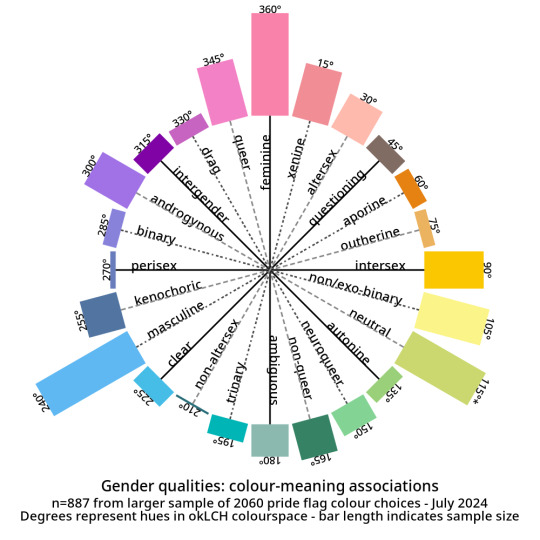
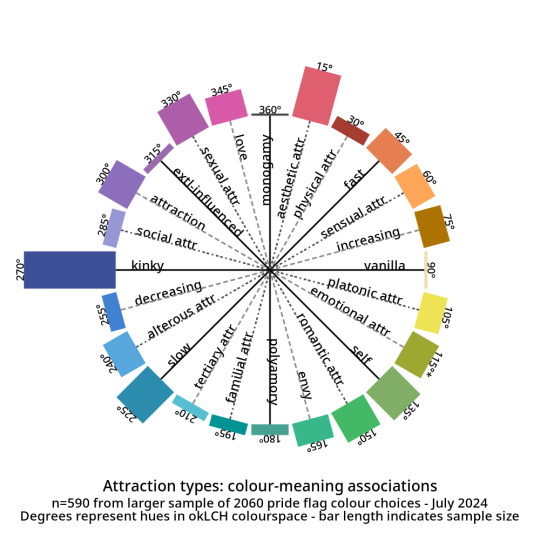
And here are the abstract modifiers: these are modifiers that were generally shared between the genders and the attractions. For example, black is used to indicate having no gender as well as having no attraction.

Click here for tables with okLCH values, hex values, definitions, and notes - I've put a more detailed write-up on my Wikimedia Commons userpage. (Mediawiki supports sortable tables and Tumblr does not.)
METHODS-AT-A-GLANCE
To make the figures above, I assembled a data set of pride flag colours. It contains 2060 colour choices from 624 pride flags, representing 1587 unique colours. Click here for a detailed description of how I gathered and tagged the pride flag colours and tagged them.
For each tag, I converted every colour to okLCH colour space and computed a median colour. OkLCH colour space is an alternative to RGB/hex and HSL/HSV. Unlike RGB/hex and HSL/HSV, okLCH is a perceptual colour space, meaning that it is actually based on human colour perception. 🌈
In okLCH space, a colour has three values:
- Lightness (0-100%): how light the colour is. 100% is pure white.
- Chroma (0-0.37+): how vibrant the colour is. 0 is monochromatic. 0.37 is currently the most vibrant things can get with current computer monitor technologies. But as computer monitor technologies improve to allow for even more vibrant colours, higher chroma values will be unlocked.
- Hue (0-360°): where on the colour wheel the colour goes - 0° is pink and 180° is teal, and colours are actually 180° opposite from their perceptual complements.
The important thing to know is that okLCH Hue is not the same Hue from HSV/HSL - the values are different! (HSL and HSV are a hot mess and do not align with human colour perception!)
You can learn more about okLCH through my little write up, which was heavily influenced by these helpful articles by Geoff Graham, Lea Verou, and Keith J Grant.
You can play with an okLCH colour picker and converter at oklch.com
🌈
MORE RESULTS: COLOUR DISTRIBUTIONS
Back when I started tagging my data, I divided my data into five main chunks: Gender qualities (e.g. masculine, androgynous), Attraction (e.g. platonic, sexual), Values (e.g. community, joy), Disability (e.g. Deaf, blind), and Other.
I'll talk about Disability and Values in future posts! But for an alternate view of the data, here are the full distributions of the colours that were placed in each tag.
They come in three parts: tags I created for Gender, tags for Attraction, and tags from Other. The abstract modifiers are spread between the first two, though their contents transcend Gender and Attraction.
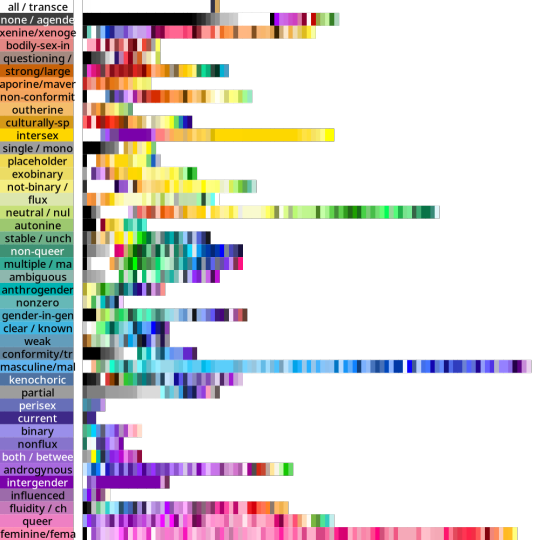
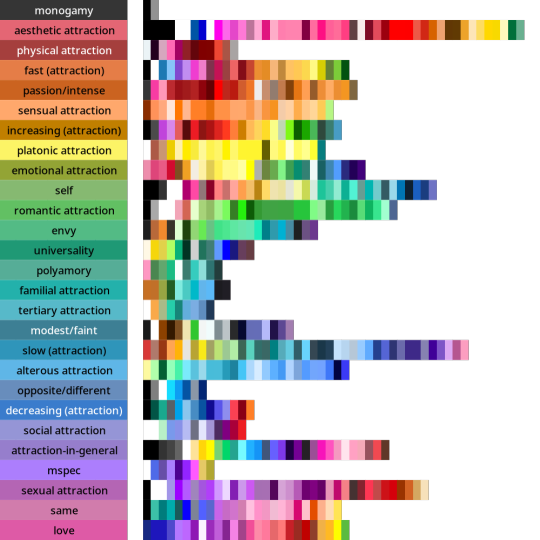
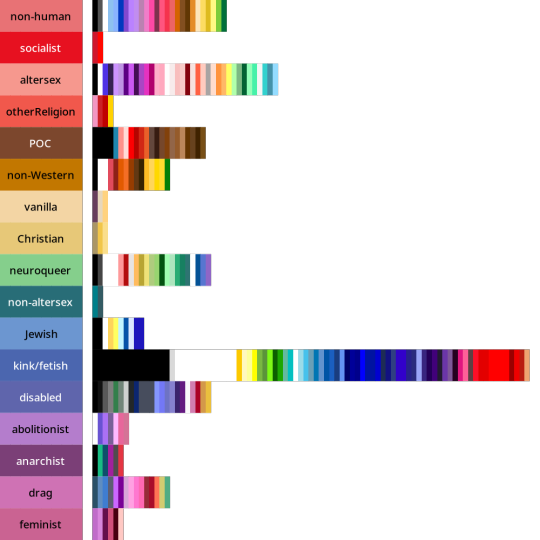
Some distributions have a lot more variance within them than others. Generally speaking, major attraction types tended to have the least variance: sensual attraction is really consistently orange, platonic is really consistently yellow, etc.
Variance and size do not correlate. Many of the smaller tags are quite internally consistent. I don't have a ton of tags in "current gender" but they're all the same dark purple. Xenine/xenogender has a whole bunch of entries, and there's a really big spread from blue to yellow.
Some tags, like intersex as well as kink/fetish show there are a small number of different colours that are very consistently used. Whereas other tags like masculine show a very smooth range - in this case from cyan to purple.
Overall I'm pretty satisfied with how things wound up! 🥳 It makes sense to me that an umbrella term like xenogender would have a lot of variance. What honestly makes me happiest is just how many tags wound up 180 or 90 degrees from their opposites/complements. 🤩
Not everything lined up nicely (the opposite of drag is .... neuroqueer? awkward.) 🤨 Some things lined up in hilarious ways, like how initially I had the opposite of kink/fetish being Christian (amazing.)
But as a whole, there's a lot of structure and logic to where things landed! I hope this makes sense for other people and can help inform both flag making as well as flag interpreting (e.g. writing alt-text for existing flags). 🌈
I'm hoping to post the Disability and Values analyses in the coming days! If you want to learn more, my detailed notes along with tables etc are over on my Wikimedia Commons userspace. 💜
Everything here is Creative Commons Sharealike 4.0, which means you're free to reuse and build on my visualizations, tables, etc. Enjoy!
#lgbt#lgbtqia#mogai#mogai flag#mogai flags#lgbtq flags#lgbt flags#lgbtqia+#vexillology#flags#colours#oklch#colour nerdery#colour theory#colour science#cognitive accessibility#design
175 notes
·
View notes
Text
References for KnY Writers: Taisho Period
Below are links to my entries about the Taisho Period and how it might affect the KnY characters (at least according to canon resources, my research, and my interpretations). Please see here for the full masterlist of References for KnY Fic Writers.
Background info: The Taisho Period (1912-1926) a bit of an in-between period in a lot of ways, with Westernization already several decades underway, but with many new policies not yet uniformly enforced in the countryside. In some ways, rural life went on like it did in the late Edo period. The majority of Kimetsu no Yaiba most likely would have taken place in 1915. This means that it's still a little early for the full-on "Taisho Roman" fashions, but the groundwork was there.
-Notes on Corp salary, simple conversions into Taisho currency, as well as other monetary details -Taisho Period overview of the Yoshiwara Pleasure District -Photos and details of preserved Taisho Period brothel -How a Taisho Period birthday may be celebrated -How a Taisho Period New Years may be celebrated (in the case of the Kamados) -How keeping track of one's age was different in the Taisho Period -Photography and education in the Taisho Period -More on Taisho education and literacy rates -Marriage and being a girl in the Taisho Period -Polygamy and the Meiji Civil Code -Dating and wedding night protocol -Being queer in the Taisho Period (and beyond) -A few real life folk songs featured in KnY -Taisho Period undergarments -Taisho Period beverages and drinking age (separate masterlist of KnY-related food here)
-Flush toilets were a thing (and there are toilets in the Infinity Fortress)
523 notes
·
View notes
Text

The eye of Uroplatus garamaso, the new gecko species my colleagues and I described yesterday. Check out that weird pupil! Four little diamonds in a chain.
#gecko#lizard#animals#eye#herpetology#wildlife#Uroplatus#Uroplatus garamaso#I have always loved the eyes of these weirdos#why would you want four separate images on your retina?#while you are at least ostensibly asleep?#sounds like orc mischief to me#also I don't know if you guys are aware that we named another one of these geckos after Treebeard#Uroplatus fangorn#so happy about that one#it's the only species I've named after something by Tolkien so far#which is kind of surprising given that my personality is composed largely of Tolkien nerdery#but there are other fandoms I have not yet acknowledged at all with species names#so keep your eyes out for some Star Trek names in the future#there's taxonomy in that nebula#this has been your evening tag ramble#enjoy
695 notes
·
View notes
Note
Check your P.O. Box when you can!
Thanks for the nudge, Anon! I did manage to get to the post office yesterday. IDK if this is you or not (I did get the note with it, saying who it was from) and I'll be sharing the rest of the mail I got this weekend, but if this was you, congrats, everyone I've sent this photo to has lost their shit laughing:
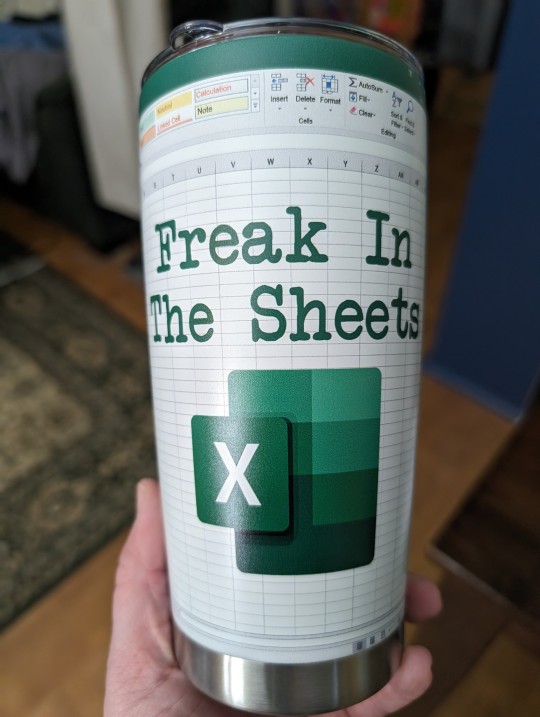
[ID: A large metal tumbler held in my left hand; printed on the outside of the cup is an Excel spreadsheet with the Excel logo prominent, and overlaying the sheet is the large text in green reading "Freak in the Sheets". It is glorious.]
233 notes
·
View notes
Text
ok so I'm trying some of the suggested Duolingo replacements and so far I've got to say Busuu is a Vast improvement on The Owl - actual explanations of grammar, idioms and manners/set phrases, videos of people saying the phrases so it feels like real people, a wide mix of testing exercises including true or false, translation mix-and-match, filling in gaps in conversations you've listened to etc. It also has short courses specifically tailored to what you're learning for, so for a holiday or business or living in the country etc. Plus there's a feature where you can help out people learning your native language by suggesting corrections to their exercises, which I haven't used yet but seems like a great idea.
238 notes
·
View notes
Text
many esteemed cycling mutuals are understandably looking at the... Everything about the recent gpogbling tweet, but as an incorrigible Noticer and part-time bike nerd i'd like to take a moment to talk about feet.
by which i mean cleats!
for those that don't know, they're components that screw to the bottom of cycling shoes, providing the interface between pedal and foot. many kinds exist but there are four brands used in the WT peloton (as far as i know)

both UAE & Jayco use Shimano's SPD-SL system, but with some gratuitous zooming in on feet we can see that bling's cleats are red whilst tadej's are yellow


this is down to the different float options offered by Shimano, “float” being how much you can adjust your foot position without unclipping (which is done by twisting the heel out away from the bike). yellow has the most freedom, red has none, and blue is intermediate. there's different axes of motion too but let's not get into that

which colour to use is basically a matter of personal preference but you're a good deal less likely to spot reds at a local club than you are in the pro peloton because their lack of movement means the bike fit has to be 100% dialed-in to prevent joint pain -- the kind of precision you'd expect from teams at the top of the sport.
as far as i can tell blue seems to be pretty widespread among the Shimano-using teams. for but a few examples: adam yates, luke plapp, and MVDP's banged-up cleats following his crash in Glasgow (it's amazing he could still clip in with those)


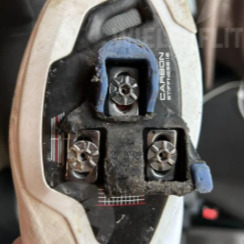
i would assume this is to balance the increased efficiency of power transfer that comes with decreased float whilst retaining enough freedom to allow comfortable adjustment over the course of long races.
bling uses the reds -- as expected for sprinters -- for maximal power transfer at high speeds, making every fraction of a watt count in a bunch sprint and keeping his legs/feet in the most efficient position without having to think about it
so initially i thought “perhaps tadej trains with yellow because they're more comfortable?”


but no -- he races in them too: these are before and during Giro stages (couldn't quickly find any from TDF/Montréal/other races so if there's photos of him using different colours please do tell me!), so the relatively increased movement must suit his riding style and specific anatomy better than the other options
or maybe he just likes them 🤷 it's not something any of us can ever know but for a rumoured €8million/year i'd expect the team to investigate most possible avenues of ~marginal gains~.
and of course riders’ preferences change over time; adam used to use yellows‚ remco used to use blues (now reds), all this is just something i thought was interesting!!
#cycling#if you made it this far thanks for indulging my nerdery ❤️💛💙#also MTB and cross use different cleat + pedal systems entirely
81 notes
·
View notes
Text
The worst thing about formal English is that it offers these wonderful suffixes, then only lets you use them in prescribed circumstances. I should be able to describe things as meatful or leftly or falsewise without departing from the formal register if I darn well please.
7K notes
·
View notes
Text
How fast is Yoriichi Tsugikuni? || Calculating his minimum speed

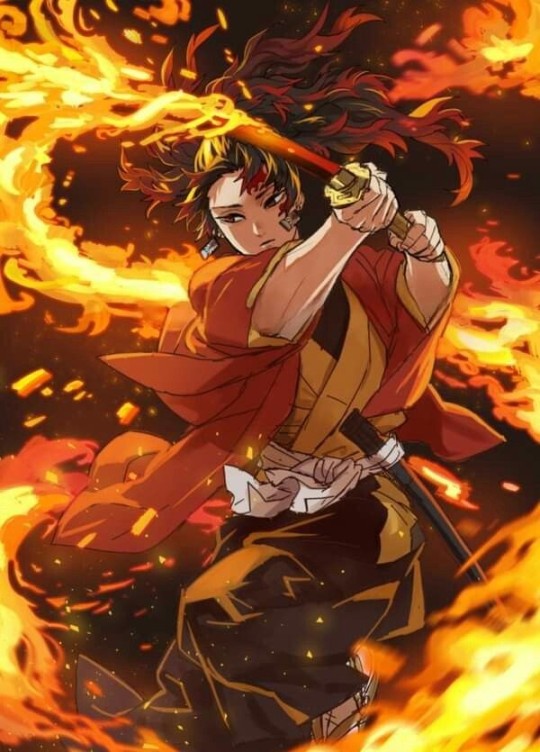
Yoriichi Tsugikuni is regarded as the most powerful character in Demon Slayer, with him being able to rival and overpower the demon king himself, Muzan Kibutsuji. He is renowned for his exceptional speed and agility; however, the true extent of his speed remains uncertain due to the lack of comparable benchmarks.
Therefore, today I will make an effort to clarify some of the confusion by applying some of my knowledge to estimate the average speed of this character. From here, you are free to interpret and use this information as you see fit.
NOTE: SIGNIFICANT FIGURES UPTO 3 DIGITS AFTER THE DECIMAL POINT
⚠ SPOILER WARNING ⚠

⨳ Muzan's Explosion: Detonation or Deflagration?
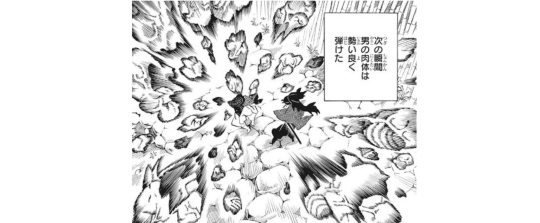
To begin, let us examine this image. If we want to determine Yoriichi's speed, then we obviously have to know the relative speed of some other body that we can compare it with. In this case, we will consider Muzan's explosion. [Not using NLM or COLM as it doesn't consider the huge amount of force being exerted]
In an explosion, an internal impulse (force per unit time) acts in order to propel the parts of a given mass into many fragments in different directions. After the explosion, the individual parts of the system have momentum. Obviously, if a body has momentum, it would mean it has a velocity as well, as momentum (p) ∝ v.
Explosions can be further classified into detonations and delafegations:
[Defragrations: Energy released is in the form of heat like in a flash fire. It requires fuel an external oxidizing agent, rely on the external pressure and are considerably more stable.] [Detonations: Energy is released in the form of high pressure (force). Does not require a fuel and doesn't depend on the external pressure, and involves chemicaly unstable molecules, which instantaneously split that recombine into different products.]
[Defragrations VS Detonations] You can refer to this link for more information. However, to keep this post concise, I will outline a straightforward distinction between the two
⇒ Muzan's explosion is more likely that of a Detonation, rather than a deflagration.

⨳ Muzan's Detonating Speed:
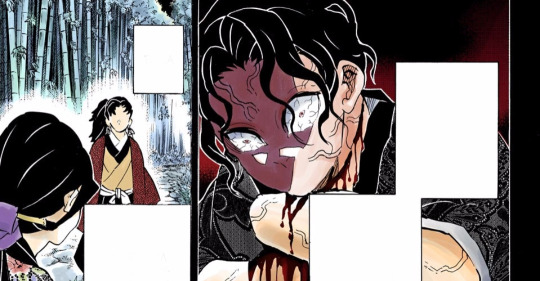
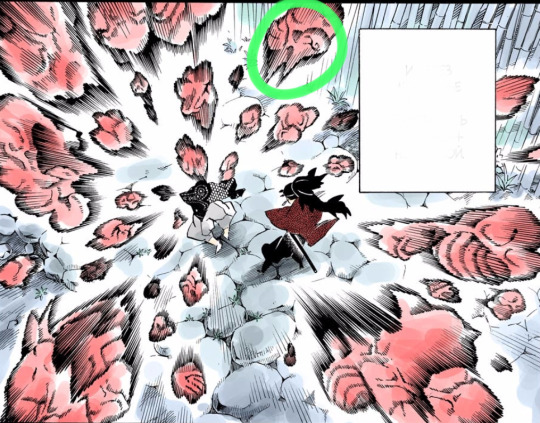
Detonation velocity depends on a number of factors, such as density, it's state, charge diameter and temperature. For solids and liquids, these velocities usually range from 4000 m/s-10300 m/s. Muzan's density is likely similar to that of a human, around 1000 kg/m³ or 1g/cm³. .. Let's compare this density to that of regular explosives:
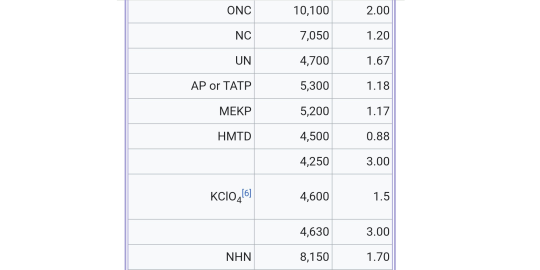
link here
Although, we can see the closest explosives to Muzan's density are 1.___ ones. However, we can also see even then these velocities aren't propotional to their ascending order of densities, but it does give us some insight.
Though, we cannot determine his charge diameter and temperature [although his flesh appears very red]. Plus, there also seems to be one compound in the given table [ansu] which only has a detonation velocity of a mere 3400m/s. So.. it is very difficult to make assumptions here. So to remain neutral, we will just use the lowest speed value, ie 4000 m/s.
⇒ Hence, we can safely conclude, that muzan likely detonates with the minimum speed of 4000m/s.

⨳ Yoriichi's Attack Range and the Time Needed For Him to Cut All the Peices of Muzan
To evaluate Yoriichi's speed, we will first calculate the total time it would take for him to react and effectively cut all of Muzan's pieces [excluding the 300 pieces, which we will discuss later] before he has the chance to escape.
So for that, first, we need to determine Yoriichi's attack range by measuring his arm length. Instead of making an estimation using measurements of an average male arm, I decided to accurately measure this out myself:

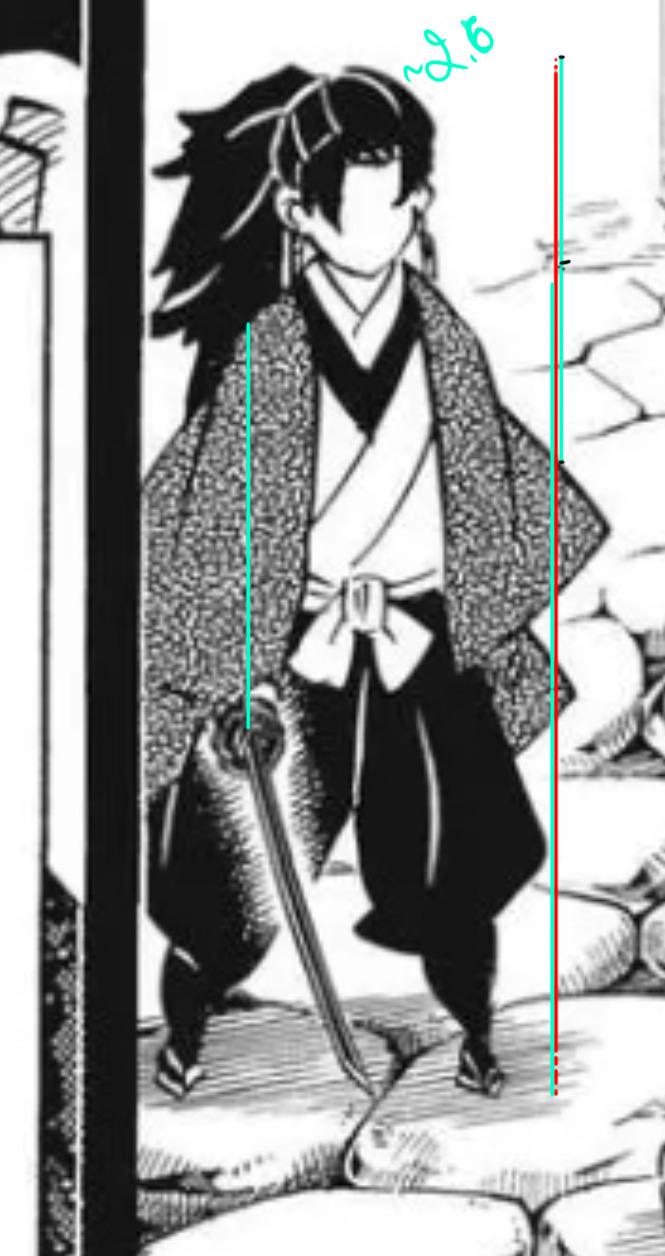
We know Yoriichi is approximately 6.3 feet tall, which is about 2.6 times the length of his arms. Based on this, we can conclude his arm to be around 73.07 cm. (190/2.6) + sword length (we'll take the average of 65 cm)
ie = 1.381 m So, the maximum time needed for him to cut down muzan would be: ∴ 1.381 ÷ 4000
⇒ ~0.000345 seconds

⨳ Distance Covered By Yoriichi:

��[I think if you know a bit about physics, you might see where I'm headed.] We know that speed = distance/time. We have already determined the time, and now we need to find the distance to calculate the speed. How can we do that? We can begin by figuring out the total distance Yoriichi's arms cover while swinging the sword:
To do this, let's refer to the image above. If we examine it closely, we can see that Yoriichi creates arcs with his sword, forming almost a complete circle

Please excuse my silly drawing, but this is my idea of the sword arc. I imagine it as two-thirds of a circle instead of a semi-circle.
To find the arc length, we will use 2πr × 2/3 Radius: Yoriichi's arms and sword ∴ 2 × 22/7 × 1.381 × 2/3
= 5.786 m is the length of each slash

⨳ How Many Slashes Did Yoriichi Make?
To finalise, we will check how many slashes he made to cut muzan. Clearly, he wasn't making just one slash for each cut, as that would be very impractical. So, let's see how much work he is doing here:

Once again, in the image above, we can see that he cuts multiple pieces of Muzan with each slash. On average, let's say he cuts about 2.5 pieces per slash. The picture shows him cutting 4 pieces with one slash and only 1 with another, with one piece just hovering, so the average:
(4 + 1) ÷ 2 = 2.5.
Now, he also mentions that he cut around 1500 pieces of Muzan, so we can divide to find the total number of slashes he made. That is:
1500 ÷ 2.5
⇒ ie; He made 600 slashes during that time.

⨳ Yoriichi's Average Striking Speed
Finally, for the moment we all have been waiting for. The speed by which Yoriichi is moving his arms would be:
n(number of slashes)×distance covered by Yoriichi/max. time frame = (600×5.786)/0.000345
~10,062,608.696 m/s
For Comparison: this is about 29,337 times faster than sound. ▪︎Have you guys ever played fruit ninja before? If you have, just picture Yoriichi taking on that game in real life; Number of slashes/frequency [1/T]= striking speed/ distance covered (gonna take 1/3 of the circumference of his slashes) Ie n= 10,062,608.696 ÷ (1/3 × 2 × 3.141 × 5.786) ∴ Slashes per second= ~ 831,361 So, if you were to toss about 8 hundred and 31 thousand fruits into the air, Yoriichi would be able to slice through them all in just one second! Meanwhile, I’m here taking like two entire minutes to chop an apple.

⨳ Yoriichi's Average Running Speed
So we have found out Yoriichi's striking speed; however, that doesn't tell us anything about how fast he can run. Since we're already looking into Yoriichi's speed, why not find out about his running speed as well?
"In an average person, the legs are able to push roughly four times as much weight as the arms can pull. What's more, the legs have an even better advantage when it comes to endurance."
Although there is no relationship between strength and speed, let us just try finding it ourselves.
Fleg-mg= ma (force exerted to lift your leg. Could have used the work formula, but then I realised that you're probably not doing any work when it's your own body. The same could be said for the force, however. Though this is an idealised situation and it really doesn't matter because:) ∴ Fleg∝a a∝v Let force required to push your arm be be f⁰ & leg be f Since f⁰ and f = 1:4 => f⁰/f=v⁰/v = v⁰/v= 1:4
This would mean the legs must also be 4 times faster than the arms.
Ie: 10,062,608.696 m/s ×4
= 40,250,434.784 m/s

For comparison: The speed of light, 299,792,458 m/s is only about 7× faster than Yoriichi's running speed. ▪︎If Yoriichi were to complete a journey around the entire Earth, traversing its full circumference, the time required for this would be: Earth's circumference: 40,075,000 meters Calculation: 40,075,000 ÷ 40,250,434.784 = 0.996 seconds [Wow.. now that's fast o-o] So imagine, if you ever find yourself missing a flight and in desperate need to get somewhere, all you have to do is call Yoriichi. He’ll have you zooming off faster than you can say “I missed my flight"!

poor muzan..
-> The distance between two countries [say, Japan to brazil] would be about 17,371 km (pretty sure it's not the road distance, so lets just just imagine Yoriichi can run on water) Time=d/s = 17371000/40,250,434.784 ...0.4 seconds to reach there.
▪︎But instead of a circumference; what about him covering the entire surface area of the earth? [not the area, but the entire outer surface, covering eacg and every path possible. Just visualize unfolding the entire earth into a flat ground.] So: 4πr² [csa/tsa] =4×3.141×6,371,000× 6,371,000 =509,805,890,960,000 m So the time: 509,805,890,960,000/40,250,434.784 12,665,848.050 seconds Which is about 3,518 hours Which is about 4 months I know now this looks kind of slow, but trust me- this is extremely fast. This pace equates to covering the entire circumference of the Earth approximately 29,348,102 times.. (29 million times)

⨳ Final Thoughts:
A/N: I tried my best to keep this entire post simple and concise as possible. For some reason though, I still feel like it might be more technical than I intended. I’m not sure this post will get much attention because of that. It doesnt matter though, I really enjoyed putting all of this together. I truly hope it proves helpful to someone out there who might find this interesting.
And to anyone who made it till here, I thank you wholeheartedly!! You’re amazing for sticking with all this. And if you think that I may have made any mistakes, then feel free to correct me!
Sources:
Leg Strength as a Limiting Factor, climbstrong Detonation velocity, wikipedia Table of explosive detonation velocities

#「ᴛʜᴇᴏʀɪᴇꜱ & ᴀɴᴀʟʏꜱɪꜱ」#Yoriichi speed#kny yoriichi#yoriichi tsugikuni#Kny analysis#Kny theory#demon slayer yoriichi#demon slayer#kny rp blog#tsugikuni yoriichi#kny#kimetsu no yaiba#Kny nerdery#How fast is yoriichi#kny yoriichi headcanons
80 notes
·
View notes
Text
A Very Ask A Manager Thanksgiving
So I love advice blogs (I maintain that comment sections on advice blogs are the best free tool for writers to explore different viewpoints, which really enriches your characterization), and for a few years now, I have had this idea that I want to do a do an Ask A Manager themed dinner, purely to delight myself. Meant to do it as a cookout this summer, but timing never worked out, so I broached the idea of doing it for Thanksgiving. My partner, who is also a nerd and therefore very supportive of my advice blog love even though it is not one of their interests, was down, with their only condition being that I should still make my cider bread with maple butter.
The menu:
Appetizers
Chips with:
Guacamole in honor of Guacamole Bob, of "ordering extra guacamole is wasteful of member dues” fame. (This being on the menu may also have been a factor in Partner being willing to have our holiday take on an Ask A Manager theme, as I once took a community education course on grilling that taught me nothing about its ostensible subject matter but did teach me to make a bomb-ass guacamole. The secret is that your first step should be to pulverize an entire head of garlic into a paste in your mocajete.)

Three store bought salsas, where the trick is to "fold" the salsa to get the best flavor

A bottle of hot sauce so we can get fired after a coworker steals our spicy food
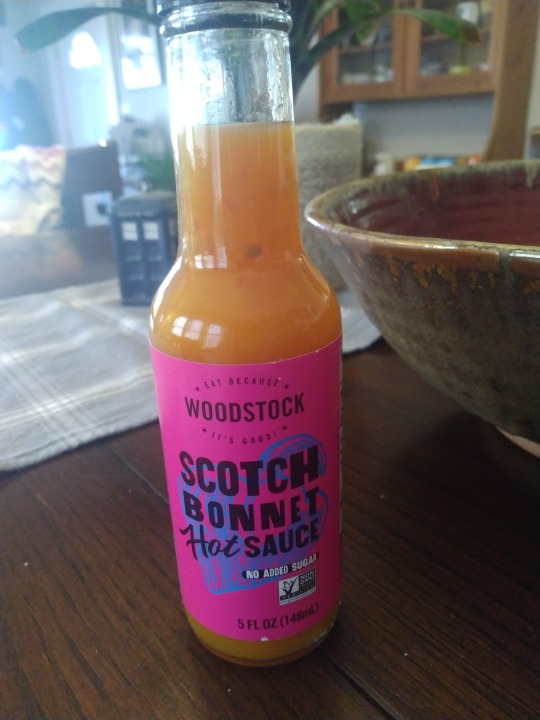
Main Course
"Duck club" sandwiches in honor of the secret office sex club where you get points for sex in different locations, and quacking is involved. (These were very decadent and if anyone's interested in a great duck recipe, I used the Duck with Lemon recipe from A Feast of Ice and Fire.)
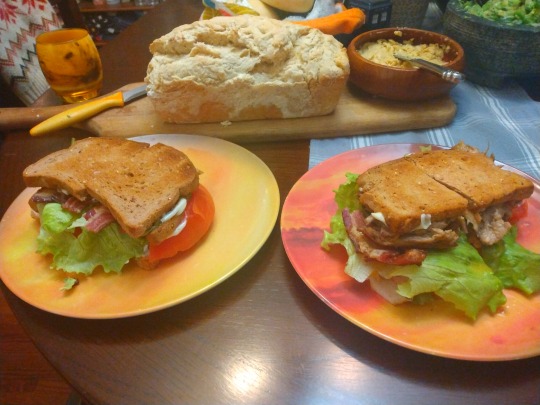
Sides
Cheap-ass rolls that I definitely deliberately brought to upstage you, yes you, the person who signed up to bring Hawaiian rolls! It's definitely not an overreaction on your part to declare that "they can all take Santa and stick it up their ass!" You're definitely not getting fired for being wildly hostile! (These are actually homemade rolls, but I weighed "buy actually cheap rolls and be done" or "spend a couple hours adapting a corgi butt roll recipe to a human butt roll," and chose in favor of the pun.)

Dessert
Bribery cupcakes, from that time a letter writer brought some cupcakes over to chat with her neighbor, the son of the Chief of Police, about a disruptive noise issue in her workplace and some commenters decided this constituted bribing a public servant. (The recipe is in the comments on that link; I made the carrot cake version. However, I realized halfway through that I was somehow low on vanilla despite obsessively buying fancy vanilla extract every time I am in a spice shop, along with a bunch of other things I don't need because buying cool spices makes me feel like a wizard. Anyway, half of these had vanilla in the filling/icing, and the other half had cardamom extract.)

A birthday cake that somehow crosses boundaries by...being too fancy? Being paid for a staff person? Not involving the wife in the planning? Anyway, the real answer to the letter writer's question is, "Eh, I don't think it's a big deal" because different offices have different norms around birthdays and it's whatever, but sometimes a low-stakes office norms question hits just right and you get 630 comments of people debating The One True Way to Do Office Birthdays, and whether or not buying a cake means you're angling for an affair. (Okay, not all the comments are about that particular letter. Anyway, I picked up this fancy-ass cake at Marc Heu Patisserie, and appropriately enough, the guy ahead of me in line was picking up a cake for his boss.)
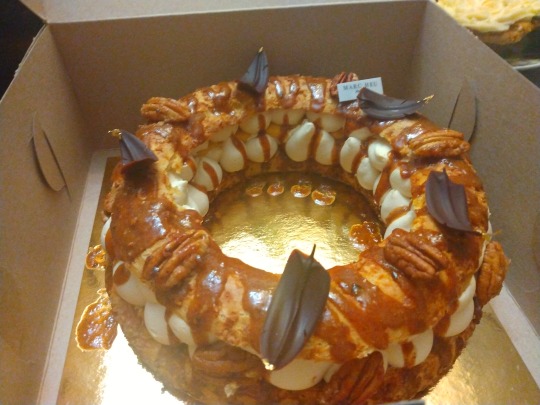
And of course, what Ask A Manager column would be complete without chocolate teapots?

Beverages
Mudslides, because "girls love chocolate." And magic tricks. And being played "You're So Vain" on the piano with a mournful stare. Partner and I are both notorious lightweights but I had been snacking all day as I cooked so I was mostly immune. Partner took one sip of this drink and immediately began loudly telling me how their one colleague doesn't sing enough to his Pre-K students, and "this classroom will do anything if you sing to them!" After dinner, they lay down on the floor and sang the Slippery Fish song.

The full spread:

323 notes
·
View notes
Note
The disrespect toward indigenous peoples is what popped put at me today in one of your posts. I wonder how long the English have been looking down on the Welsh. We're the Saxons like that or is it the Normans who really thought they were better than everyone else. Cause it seems like it goes back a long way.
Oh, both, just in different ways. The Normals were imperialist, the Saxons were more theft and landgrab.
Something that makes me want to start hurling knives is the INCREDIBLY COMMON English myth that the Anglo-Saxons were a sweet innocent indigenous British people who were conquered and bullied by those mean nasty Normans (and Vikings), and because the Normans came over via France, that means everything was actually THEIR fault, and the true English i.e. the Anglo-Saxons, were victims too :(
When I say it's incredibly common, by the way, I really mean it. Enormous numbers of modern day English people believe this. I've seen BBC programs about the Viking invasions that claimed without a trace of irony that the Vikings would take slaves from "the native Anglo-Saxons". I've literally had English people comment this shit on posts of mine about Celtophobia and Welsh history. Like I'm there describing how the last Prince of Wales was locked in a wooden cage in Bristol Castle at the age of eight and lived out the remainder of his life there until his fifties so the Welsh would know their place, and some snivelling English cunt will straight up write a message going "Teehee really it was the Normans not the English though and they conquered the poor Anglo-Saxons too, poor England uwu"
Anyway in the dying days of the Roman empire in Britain one of the leading reasons for Rome abandoning Britannia was the constant waves of Anglo-Saxon invaders. There were so many the east coast of Britain became known as the Saxon Shore. There were so many the Romans built a line of forts that were and are literally called Saxon Shore Forts. There were so many that an official, historically documented, paid governmental position in Roman Britain was the Count of the Saxon Shore, i.e. the guy responsible for keeping the bastards out.
Rome had banned native military, of course, so when they then withdrew and took the armies with them, the people left had no defences against the incoming waves of Angles, Saxons and Jutes. England fell pretty quickly, Angles in the north, Saxons in the south, Jutes primarily in the east, I believe. What stopped their westward expansion was the Brythonic Celtic nations living in modern day Wales. And this is the origin of the Welsh dragon - those separate kingdoms needed a banner that united them, and represented Not Saxon. An anti-Saxon force. They chose a red dragon.
This is also the origin of King Arthur. An anti-Saxon king of the Brythons, who would repel these Germanic invaders. (It was several centuries later that England realised they should probably steal the term 'British', because otherwise they were marking themselves as 'not native'.)
Anyway the saving grace of the Anglo-Saxons in the end was actually that they were whiny little bitches who gave up trying to fight in Wales with its difficult mountains and fought each other instead. The whole sorry tale of the Heptarchy is the various Anglo-Saxon kingdoms fighting like cats in a bag, while Saxon king Offa built a dyke along the Welsh border and went "WELL YOU'RE NOT ALLOWED OVER HERE" and every Welsh king went "...we literally didn't want to conquer you anyway, you spectacularly sad and stupid man"
Oh, and of course, there's the name 'Wales'. Given to us specifically by the Anglo-Saxons. And translated by centuries of English scholars, mostly very smugly, as 'foreigners'. A fun bit of early propaganda, look - foreigners in our own country that they tried and failed to steal.
All of which is a circuitous way of saying - yeah, it goes way back.
2K notes
·
View notes
Text
What Pride Flags Mean Pt 2: Disability
What do colours on pride flags mean when it comes to disability? Here's what I found!

I assembled a data set of 624 queer & disabled pride flags, containing a total of 2060 colour choices. I tagged each colour choice based on its known meaning(s). There are 41 disability-related tags, with 403 colour choices from 134 different pride flags.
On the left are the names of the tags. To the right of each tag is a series of squares, representing all the pride flag colour choices that were given that tag. The more squares there are, the more pride flags I found which had that meaning.
I then calculated a median colour for each tag. Every colour was converted into okLCH colourspace, where colours are represented with three values: lightness, chroma, and hue. I took the median lightness, median chroma, and median hue, and used those to create the colours on the left (the backgrounds of the tag names).
Detailed results are under the cut, and at the very bottom is a simplified & condensed colour-meaning association list that should be easier to remember & keep track of.
RESULTS
Disability in general came out as purplish blue. I kinda expected it to be blue, but guess more people think of it as purple!
Medicine & madness
Only a single flag - the Crohn's disease flag - had anything positive to say about the medical establishment. The Crohn's flag uses white to represent the doctors/nurses/researchers/etc who help Crohn's patients.
Most often if disability pride flags had something to say about the medical establishment, it was negative. There are five entries under underdiagnosis/misdiagnosis (mostly black/grey), and six for undiagnosed (mostly white).
And nine entries that I tagged with "iatrogenesis" which is the term for when medical intervention causes disease/disability.
The most common form of iatrogenesis was psychological trauma caused by the medical establishment. In particular, psychiatry was most often implicated for this, as seen in the psychpunk, systempunk, and traumatic psych experience flags. These were mostly purple, probably because mad pride is pink/purple.
Also related to mad pride was the psychosis+schizo spectrum, also using purple. (See: psychosis+schizospec flag, schizoaffective flag). Plurality also tended towards magenta but had a large range.
On the flip side of mad pride were flags that talked about mental health/illness as a negative thing. These tended to use blue or green. For example, the HS flag uses blue for "the toll that HS takes on mental health". This chronic pain flag uses a bluish green for how chronic pain messes you up emotionally.
Psychological trauma and dissociation was usually dark - often a dark grey. Red, purple, and teal were all used. The median winds up being a dark purple.
Mood disorders wound up with a median being blue but it had a bunch of subthemes. Red was used for anger & manic episodes. Yellow was also used for manic. Green and teal for panic/anxiety. Blue for depressive. Purple and black used for general negativity.
Neurodivergence
Autism was almost equally split between red (#RedInstead started in 2015 by a Canadian ASAN activist) and yellow (#GoingGold started in 2018 by AutisticUK). These are two prominent colours used as alternatives to the blue of Autism Speaks. I went into this personally inclined to the gold because of the Au=Autism pun, but splitting the difference and being orange actually is kinda nice. Feels inclusive.
Being non-verbal was reddish brown. It overlapped a lot with non-verbal autism but wasn't 100% autistic so I kept it a distinct tag.
ADHD had a bunch of variety. Orange was the most popular colour (7 out of 22) but purple (6) also got used a bunch. Some flags made a distinction between inattentive ADHD & hyperactive, usually with violet for inattentive and orange for hyperactive. But both orange and purple were used for all ADHD types.
Dyslexia was navy blue. Dyscalculia was dark green. Less common learning disabilities/differences which only had one pride flag representing them (e.g. dysorthographia) I lumped into "other learning-disabilities". It also came out orange.
Borderline PD had equal amounts of yellow and blue, yielding a median green because green is in between yellow and blue.
General neurodiversity was green. Yellow and blue also got used. I don't think the blues (like in this dyspraxia flag) in my data set are references to Autism Speaks but I personally would avoid using blue for neurodivergence regardless.
Cognitive difficulties was where I lumped together brain fog and memory problems. These were generally coming from chronic illness flags, like the chronic migraines flag. These were generally grey or greyish and a bit purple.
Sensory & communication disabilities
In @capricorn-0mnikorn's original meanings for the disability pride flag, green is used to represent sensory disabilities. I recently proposed some new meanings for the stripes, but I've felt least sure of my suggestion for the green stripe, so I wanted to find out if existing sensory flags really use green.
Blind & low-viz tended to be black/grey, like this one.
Deaf/deaf/HOH was blue, which is popularly used in Deaf culture (including the deaf flag). Stuttering, which isn't a sensory disability but is a communication disability like deafness, was also blue.
Sensory processing issues, such as auditory processing disorder (flag1, flag2), tended towards the cool greens & teals. This is probably in line with how neurodiversity in general was green.
So it's kind of a mixed result. As I already kinda suspected, it doesn't seem like Deaf/blind folks were really using green. But sensory processing like auditory processing disorder does use it. 🤔
Chronic illnesses
The tag for chronic illness in general was a mix of blue, purple, and red. The median winds up being a pinkish purple.
Chronic pain and chronic fatigue both wound up as bluish purple, but with some notable reds. Autoimmune conditions like lupus were also purple, but a pinkish purple. Epilepsy was purple.
Sleep disorders were also bluish purple, like in this narcolepsy flag. This makes sense to me: there's a connecting theme here of sleep and rest, and bluish purple being considered a colour of the night.
Respiratory conditions were sky blue - probably a reference to air and breathing (e.g. the blue in this long covid flag).
Gastrointestinal conditions such as gastroparesis were generally lime green or chartreuse (the colour between yellow and green). This is probably a reference to bile & gastric juices having these colours.
Reproductive disorders were about half yellow (e.g. this endometriosis flag), about one quarter purple, and one quarter red (e.g. this endometriosis flag). The median wound up being yellow.
Invisible disabilities were usually white, but a bit of teal.
Mobility & physical differences
Low mobility wound up as brown. Red was a common choice, but yellow/brown was more common, such as in this disability flag.
Within the mobility tag, motor coordination/coordination tended to be yellow (e.g. this autism flag), body weakness tended to be green (e.g. this ME/CFS flag).
Physical differences such as deformities also wound up as a warm yellow. There's the red from this congenital amputee flag, and the greenish yellow from this radial dysplasia flag.
Models of disability
I did not include the new proposed meanings for the disability pride flag in this data set. I wanted to see if the proposed meanings are in line with pre-existing flags.
Social model wound up as blue, in line with my proposal. 🩵
Ableism came out as dark grey, with a bit of teal. This includes both fighting ableism and being victims of ableism. If I were to match it to a model of disability, the radical or social models seem most relevant.
Disability visibility & pride came out as yellow. This is in line with yellow being culturally associated with happiness and joy. I consider this to be in line with the affirmation model and my proposal. 💛
Disability caused or amplified by racism/classism came out as dark brown/red, but there also were only four entries (purple/red/brown/black). The black and brown I assume are in reference to the brown skin of POC (e.g. this fibromyalgia flag).
My proposal has red as debility (disability caused by violence). This arguably lines up to the racism/classism, but I think it's kind of weak because of how few disability+racism/etc flags I found. I'm considering this inconclusive.
The economic model showed up as olive (between yellow and green). The economic model was presented as ableist. For example, the bad disabled flag has a green stripe for "being useless/uneconomic" in a context that makes clear that this is a way of "sham[ing], discredit[ing], denigrat[ing] disabled people".
As mentioned at the top, the only pro-medical entry was a single white stripe from the Crohn's flag.
This has me now second guessing the white & green in my original proposal - maybe the medical model should be under the "other models" of the white stripe? 🤔 And change green to something that would more easily include sensory processing disabilities? Like maybe the human rights model? 🤔 IDK, would like feedback! 💚 ***
SIMPLIFIED RESULTS
The feedback I got from @queercripintersex on my analysis of gender/attraction colours is it'd be easier to have results that are clustered around a small set of colours with memorable colour-meaning associations.
So I did another round of clustering to simplify things down. I brought the 41 tags down to a more manageable 18. And I've added how I personally would remember each colour.
White: medical model. White like the lab coats doctors wear.
Off-white: invisible disabilities. Off-white like you're barely visible against a white background.
Grey: confusion (brain fog + un/misdiagnosis). Grey like fog.
Black: blind/low-viz. Black like absence of light.
Dark red: trauma. By this I mean both physical trauma (injury) and psychological trauma. Red like blood.
Dark brown: oppression (ableism/racism/etc). Red like blood plus brown like black/brown skin.
Reddish orange: autism/ADHD spectrum. Orange is opposite of blue on many colour wheels, so is a good option for being the opposite of Autism Speaks. Orange is also used in a lot of safety equipment and the like because of how it catches the eye's attention, and the association with attention -> ADHD.
Orange-ish yellow: reproductive disorders. Gold like the intersex flag.
Yellow-brown: physical disabilities. I don't have a good memory aid here, best I'm coming up is it's like the colour of wood, which is used for making mobility aids like canes but also "wooden" is used to describe some motor coordination impairments. If you have a better way to remember it let me know!
Yellow: positivity (disability pride + mania). Yellow is often associated with happiness.
Yellow-green: gastrointestinal. Like bile and vomit.
Green: neurodiversity. Because these are natural differences and green is associated with nature.
Teal/cyan: negativity (depression/etc, negative aspects of disability). Teal is has the same first three letters as tears, and we say people have the blues.
Blue: communication (Deaf/stuttering/etc). Blue also gets associated with openness and clarity.
Purplish blue: social model. Honestly the way I'll remember this one is that social attraction was a similar colour. Blue is often associated with society, conformity, and tradition.
Bluish purple: disability in general. Indigo is a good colour for not fitting in: we're neither blue nor purple.
Purple: chronic illness (pain/fatigue/etc). Purple is associated with the night and sleep, and chronically ill people need rest.
Pink-purple/magenta: madness. Pink and magenta aren't "real" colours in the sense that there do not exist wavelengths of light that make pink and magenta specifically. Those colours are made by our brains, which seems apt!

(Everything here is Creative Commons Sharealike 4.0, so you're free to reuse and build on my visualizations, tables, etc. Enjoy!)
EDIT (2024-07-24): earlier version of this post incorrectly wrote that the median hue for reproductive disorders was red. It was yellow.
#disability#disability pride#disability pride month#disabled#actually disabled#disabled pride#crip#crip pride#flag design#colour nerdery#vexillology#colour
128 notes
·
View notes
Text
Determining Ages and Birth Years
Kimetsu no Yaiba’s first official fanbook gave us ages for the many of the main characters, but in a manga where calculating age can be crucial, why are these numbers not so straightforward? Because the Japanese calendar is a mess, and the Taisho period was an in-between stage in many ways. Many new changes were established in the Meiji period but not broadly enforced until the Showa period, including how to count one’s age.
This subject can be terribly complicated, but please follow me below for:
--Historical context for how methods of counting age could differ --Which method I choose to apply to Kimetsu no Yaiba and why --Based on that, a list of my calculations for dates of birth, zodiac signs (Chinese and Western), and because it’s handy, the date each of these characters would have turned 25
In the Taisho period, there are two methods of counting age in play:
Kazoedoshi (“counting years”): Counting the years one has been in alive in, with that year having started on the agricultural new year and counting a new year to one’s age each New Year’s Day after that, like how it is still practiced in South Korea.
Which is to say, you are born at age 1, counting the first calendar year you lived in, and on the following New Year’s Day, you are age 2, even if you have only been out of the womb a very short time.
Mannenrei (“full year age”): Counting only each full 12-month period since your birth as part of your age, like how it is practiced in the United States of America.
Which is to say, you are born at age 0, and after twelve full months have passed, you are age 1.
Kazoedoshi was practiced through most of the Demon Slayer Corp’s history, but the Meiji government enforced a switch to Mannenrei in 1902. However, most people still practiced Kazoedoshi throughout the Meiji, Taisho, and early Showa periods, and it wasn’t until 1950 that the government reinforced the switch to Mannenrei. This is also when, with the influx of American culture due to the post-war occupation, individual birthdays started to be marked with cake and presents. Until that time, people did not pay much attention to their date of birthday besides, perhaps, a passing notion and maybe a shrine or temple visit and a nice dinner (see more on this post). Many people continued to count their own age in Kazoedoshi until 1950, and although some people liked the “oh, actually I’m younger than I thought I was!” surprise (because Manrenrei really was outside of their usual way of thinking), it made centenarians a little sad that they hadn’t actually reached 100.
Similarly, even though the Meiji government enforced a switch to the Gregorian calendar which put New Years on January 1, many people still celebrated a sliding date according to a lunar-based agricultural calendar, like is still done in China. It was likewise later reinforced.
In modern Japan, New Years on Gregorian January 1 and counting age by the Mannenrei system are the norm and standard, however, some customs (especially but not limited to religious customs) are still celebrated according to the agricultural calendar and Kazoedoshi ages. It’s annoying to keep track of and if I had a 5-yen coin for every time I say the Japanese calendar is a mess, I’d have a lot more yen.
The canon of Kimetsu no Yaiba does not specify any of the following: 1. What year most of KnY takes place (but based on clues from the Hand Demon, we can extrapolate that most of it takes place in 1915) 2. Whether the characters’ given ages are according to Kazoedoshi or Mannenrei, and whether the characters’ given birthdates are according to the Gregorian or agricultural calendars 3. Which method the characters use to count New Years and their own age 4. If there are any differences among the cast and how they count these things (like if the city-slickers were with the times and the country bumpkins were not) 5. Whether or not Amane accounted for Mannenrei or Kazoedoshi when stating that all the marked swordsmen of the Sengoku period died by the age of 25
So what are fanfic writers who are preoccupied with canon accuracy to do? How much should the fans of characters who got the mark fret?
After tying my brain in knots (for years, since I attempted tackling this issue years ago and this is my better post addressing the issue(s)), here are the ways that I approach it.
First: I firmly treat most of the events of canon as firmly taking place in Gregorian 1915, with the Final Selection taking place that winter and Muzan’s defeat coming sometime around the very end of 1915 or start of 1916. (See here for how I calculated all the time frames indicated in canon. You’re welcome.)
Second, we have to treat the official fanbook material in the context of how it was published. I think the ages in the fanbook are given in Mannenrei for the benefit of Heisei/Reiwa period readers, but if you really want to dig into it, the characters might interpret their own age differently based on Kazoedoshi, since it was such a prevalent way to count one’s age even for people born in the Taisho period. For example, Tanjirou’s given canon age is 15 (Mannenrei), but if you ask him in-universe, he might say he is 17 (Kazoedoshi).
Even if we assume many of the characters use the agricultural calendar and Kazoedoshi, there is a chance that characters who actively used western technology—for example, Shinobu, who uses textbooks in English microscopes and thermometers that likely came from Germany—had switched to Mannenrei for the sake of more accuracy on an individual basis. It is also possible that the Corp enacted their own standardization to Mannenrei around the time they standardized uniforms and updated the payment structure. If this is the case, it might have required country bumpkins to rethink the systems they had always been used to. Tanjirou, if asked in-universe once he is a Corp member, would therefore say he is 15 (Mannenrei).
The places the Kazoedoshi/Mannenrei difference has more implications is where characters have stated their own age. For example, Himejima seems to use a Mannenrei system (he states that he became a Hashira at age 19, and now is clearly over the age of 25, with his canonical age being recorded as 27. The numbers check out). This makes me more curious about Muichirou, who has a canonical given age of 14, but says in his own recollection that he was 10 when he was orphaned, and 11 when Yuichirou died.
If Mannenrei: It was four years or more ago that his parents died, and then sometime after he and Yuichirou turned 11 on Gregorian August 8, the demon attacked on a hot summer night. If Kazoedoshi: It was four years or more ago that his parents died. New Years passed that winter and he and Yuichirou turned 11. Many more months passed before the demon attacked on a hot summer night. However, if the Corp enforces his Mannenrei age of 14, but being a country bumpkin with a fuzzy memory, Muichirou still thinks of himself in Kazoedoshi, thereby making him think of himself as 16: It was six years or more ago that his parents died. New Years passed that winter and he and Yuichirou turned 11. Many more months passed before the demon attacked on a hot summer night. He nonetheless became a Hashira relatively recently (according to aligning Kyojuro-related flashback material and the second fanbook making passing mention that he hasn’t been a Hashira that long so his impression of the others isn’t that deep). This implies he spent a very, very, very, very long time incapacitated before he could so much as hold a sword, let alone join the Final Selection.
So what if we consider the opposite, that every given age is in Kazoedoshi? That would mean that when the fanbook and Tanjirou say he is 15, we would translate that back to a Mannenrei age of 13. And, dear readers, do you really want to imagine the entire cast being one or two years younger than their given age? I didn’t think so.
It is already very, very difficult to determine the order of Kimetsu no Yaiba canon both due to incomplete histories and canonical errors introduced by outside material (Ufotable animating Kanao’s May 19 encounter with the Kochou sisters with a winter setting, or Hirano-sensei drawing a spread of all nine Hashira in a 1913 setting) or timeline errors introduced in the original manga likely due to oversight (Gotouge drawing Aoi in uniform shortly after Kanae’s death when Aoi is later stated to have attended the same Final Selection as Muichirou, who at the time Kanae died is likely still living with his parents). That is why I assume the following rule of thumb:
When ages are given in-universe or in supplementary material, assume it is Mannenrei, because this is a shounen manga and not a math textbook. (As another case in point, the heights of the characters would have made most of the characters giants in Taisho society, though they get away with just being a bit on the tall side in Reiwa society. Some things are simplified for the benefit of modern readers.)
Assume the characters do not pay much attention to their age, or their birthday, because this is a shounen manga with a lot of dedication to historical settings and folk traditions (and those folks didn’t pay much attention to their birthdays).
Ergo: If the Corp tells its members “this is your Mannenrei age, use it. When we say 25, we have already done the math from our Sengoku period records and we mean 25 in Mannenrei,” the Corp members probably accept that. However, the Corp members might think of it as having two ages for two different purposes. Given the prevalence of Kazoedoshi, in their heart, they might still think of New Years as the time when you collectively celebrate everyone’s birthday.
Since I’m assuming Mannenrei, I’m also assuming Gregorian birthdates, and assuming everyone’s given canon age to be the age they were during the Infinity Fortress battle that took place roughly around New Year’s Day 1916.
Why am I picking this date? Because this is when the first fanbook was published, and it treated canon as it was occurring at that time in publication, so Akaza, Douma, and Kokushibou were not yet given the “eliminated” status (also, Rengoku was given already called “former” Flame Hashira. Shinobu’s demise had not yet been published in the serialization).
I also say “roughly New Year” because of the agricultural/Gregorian calendar issues. The agricultural New Year’s Day in 1916 would have fallen on Gregorian February 4, but because I’m treating this as the Corp having adopted Mannenrei, I’m also having them treat Gregorian January 1 as New Years. Because Ubuyashiki Nichika and Hinaki were singing a New Years song when Muzan strolled in to visit, that leans credence toward it happening around then. More crucially, cherry blossoms are in full bloom “three months later,” which aligns it best with Gregorian January 1, since late March/early April is when you are most likely to get the full bloom of the most common somei-yoshino cherry trees.
It’s also a convenient date and time in the plot to measure by because all their birthdays would have passed for that year, barely including Nezuko’s. (But if Mugen Ressha took place prior to May, like I have calculated before… does this mean Rengoku would have been part of Team 21? My gosh, I’m crying. For this list, I’m treating it as the age he would have been relative to the others on that date.)
Tl;dr: I’m assuming you can treat every canon age as Mannenrei, and totally ignore Kazoedoshi in the first place (unless if it will help you be crafty in your fic, because there’s still a good case to be made for the characters using it).
Now here is the fanfic reference list I promised, including: 1. Their date of birth according to the Gregorian calendar, calculated based their canon age being their Mannenrei age as of December 31, 1915. 2. Their birth year according to the Japanese period 3. The year they would have turned 25 4. Their Chinese zodiac sign (yes, I know there is argument about whether or not you can say “zodiac” here, but this isn’t the place to start a new topic. Anyway, I’ve also included the elements for each year for the deep nerds who anticipate it) (also I’m really sorry, Inosuke is not born in the Year of the Boar, nor is Iguro born in the Year of the Snake) 5. Their Western zodiac sign (yes, I know there was a recalculation of sun signs some years back, but no, I’m not bothering to take that into account, this post is complicated enough as it is) Important caveat: I'm bad at math.
Kamado Tanjirou: July 14, 1900/Meiji 33 (1925/Taisho 14), Metal Rat, Cancer Kamado Nezuko: December 28, 1901/Meiji 34 (1926/Taisho 15), Metal Ox, Capricorn Agatsuma Zenitsu: September 3, 1899/Meiji 32 (1924/Taisho 13), Earth Boar, Virgo Hashibira Inosuke: April 22 (as was written on his fundoshi along with his name), 1900/Meiji 33 (1925/Taisho 14), Metal Rat, Taurus Tsuyuri Kanao: May 19 (chosen for the day she encountered the Kochou sisters), 1899/Meiji 32 (sometime in 1924??/Taisho 13??), Earth Boar(?), Taurus (???) Shinazugawa Genya: January 7, 1899/Meiji 32 (1924/Taisho 13) – by Gregorian/modern Japanese system he is an Earth Boar, but the agricultural New Year wasn’t until February 10 that year, so he might instead be considered an Earth Dog, Capricorn Tomioka Giyuu: February 8, 1894/Meiji 27 (1919/Taisho 8), Wood Horse, Aquarius Kochou Shinobu: February 24, 1897/Meiji 30 (1822/Taisho 11), Fire Rooster, Pisces Rengoku Kyoujurou: May 10, 1895/Meiji 28 (1920/Taisho 9), Wood Sheep, Taurus Uzui Tengen: October 31, 1892/Meiji 25 (1917/Taisho 6), Water Dragon, Scorpio Kanroji Mitsuri: June 1, 1896/Meiji 29 (1921/Taisho 10), Fire Monkey, Gemini Tokitou Muichirou: August 8, 1901/Meiji 34 (1926/Taisho 15), Metal Ox, Leo Himejima Gyoumei: August 23, 1888/Meiji 21 (1913/Taisho 2), Earth Rat, Virgo Shinazugawa Sanemi: November 29, 1894/Meiji 27 (1919/Taisho 8), Wood Horse, Sagittarius Iguro Obanai: September 15,1894/Meiji 27 (1919/Taisho 8), Wood Horse, Virgo
Afterword:
Suppose Amane didn’t do the math to state the Sengoku swordsmans’ ages in Mannenrei terms? What if their records were spotty, or she took Kazoedoshi and applied it to swordsmen who now use Mannenrei?
Well, in that case, Tanjirou would probably die sometime in 1923, and Giyuu & Sanemi sometime in 1917. Ergo, I think I will stick with Amane having done the math and converted Sengoku ages to Mannennei if she was going to tell them all something so important.
Also, using Kazoedoshi would totally mess with the Kimetsu Gakuen AU.
85 notes
·
View notes